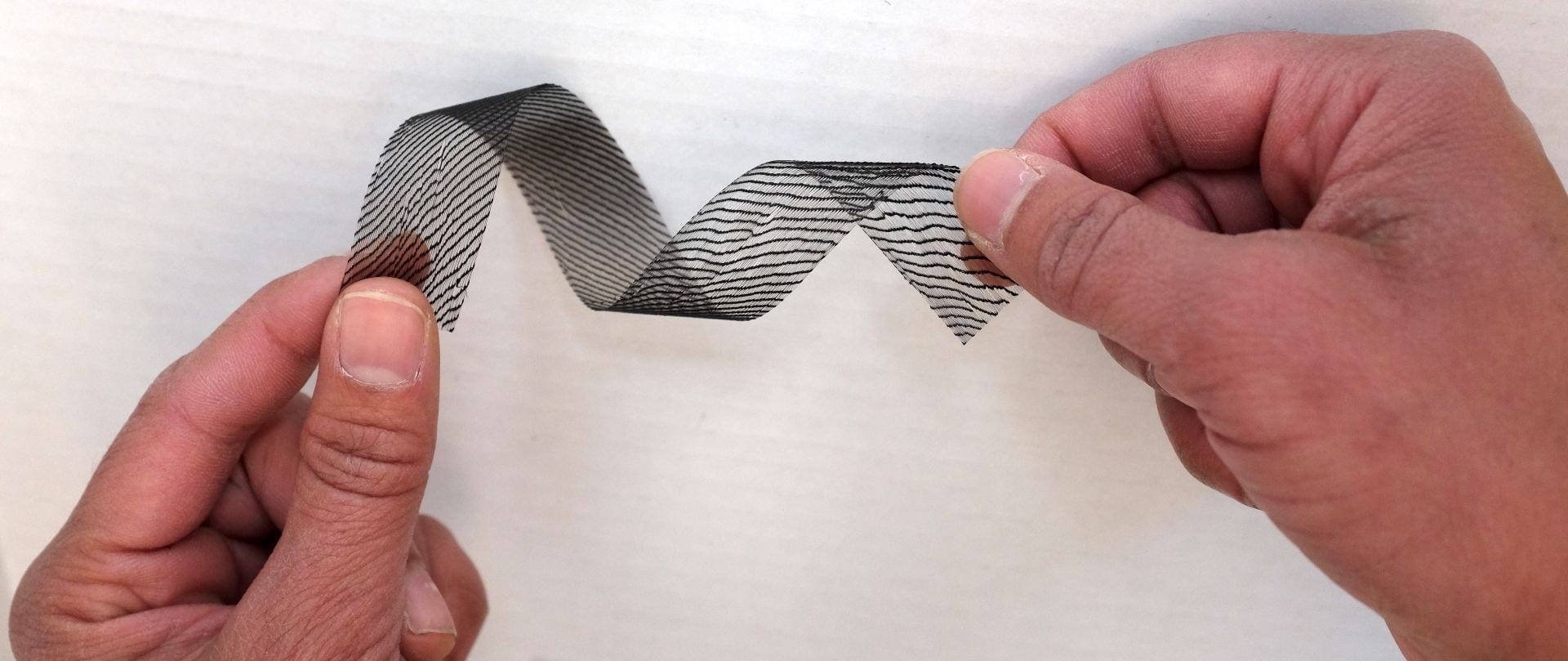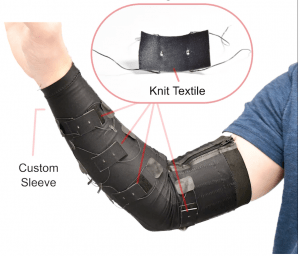Projects

Origami-patterned sensors and actuators
The goals: Investigate origami properties of soft materials, determine tunability of origami patterned soft-material sensors, and apply to origami actuators for proprioception and control. Project information, including robot STL generation code and ROS nodes, is available here.
N. Hanson, et. al., “Controlling the fold: proprioceptive feedback in a soft origami robot,” Frontiers in Robotics and AI, vol. 11, 2024
N. Hanson et. al., “Hold ’em and Fold ’em: Towards Human-scale,Feedback-Controlled Soft Origami Robots,” 2024 (arxiv)
K.L. Dorsey, H. Huang, and Y. Wen, “Origami-patterned capacitor with programmed strain sensitivity,” Multifunctional Materials, vol. 5, no. 2, 2022
Supported by NSF CAREER ECCS-1846954
Wearable robots for limb swelling
The goals: Limb swelling is observed across multiple health conditions (chronic edema, chronic venous insufficiency). We investigate approaches to create at-home and wearable monitoring and treatment tools through multiple approaches.
I. Ampomah Mensah§, D. Leblebicioglu§, and K.L. Dorsey, “Wireless Capacitive Measurement Board for Soft or Wearable Robot,” Proc. 8th IEEE-RAS Intl. Conf. on Soft Robotics, Lausanne, Switzerland, 2025. (to appear)
D. Leblebicioglu§, I. Ampomah Mensah§, H. Gao*, M.S. Khan§, and K.L. Dorsey, “Soft Capacitive Sensor and Wearable Sleeve Towards Measuring Fluid Retention,” Proc. IEEE Sensors Conf., Kobe, Japan, 2024. (selected for lecture presentation)


Tactile Sensing with Mechanical Switch Structure
The goals: Many piezoresistive soft material sensors have large hysteresis and settling time due mechanical interactions between the soft polymer and conductive sensing layer. We micromachine carbon fibers to have a compliant pressure sensor structure with low response time.
L. Rizvi, I. Abubakar, and K.L. Dorsey, “Towards encoder-like tactile sensing with buckled beams”, in Proceedings of the 2025 26th International Conference on Solid-State Sensors, Actuators and Microsystems (TRANSDUCERS), Orlando, USA, 2025. (to appear)
Supported by a research gift from Amazon Robotics
Affective Touch through Wearable Actuators
The goals: Co-PIs Dorsey and Quigley will investigate approaches to improve comfort using neuroscience-based principles of affective touch, a specific well-documented psychologically pleasant tactile sensation carried by unmyelinated sensory fibers in skin. The overall goal of this proposal is to enhance the comfort of textile-based wearable devices using wearable actuators that utilize features of affective touch (typically evoked by low-velocity stroking by a soft-textured object at low force.
Supported by a TIER 1 grant from Northeastern University
Archived Projects
DefeXtiles: 3D printed fabrics for wearable actuators and sensors
In collaboration with the Tangible Media Group at MIT.
The goal(s): Fabricate textile-like devices, sensors, and actuators in a tabletop additive manufacturing process (fused deposition modeling)
The why(s): Access to rapid prototyping tools is expanding with neighborhood maker spaces, but many tools used to prototype wearable devices and e-textiles are expensive and/or require extensive training. This project envisions bringing active and e-textile capabilities to users in their homes, which will expand access and control over wearable design.
Shown right is a flat DefeXtile sample made from PLA that is being twisted to illustrate its flexibility.
Publications: K.L. Dorsey, S.F. Roberts, J. Forman, and H. Ishii, “Analysis of DefeXtiles: A 3D printed textile,” J. Micromech. Microeng., 2022.
Supported by the MIT MLK Visiting Scholars program


Selective contact in anisotropic resistive sensors (SCARS) Sleeve
In collaboration with the Harvard Microrobotics Lab.
The goal(s): Design selective electrical contact sensors to select for strain over torsion, curvature, or pressure and demonstrate a sensing sleeve with the ability to identify hand gestures.
The why(s): When interacting or collaborating with machines, gestures are a natural way to convey information. This sleeve identifies three gestures without encumbering the hand with a glove.
Publications: O.A. Araromi, M.A. Graule, K.L. Dorsey, S. Castellanos, J.R. Foster, W.H. Hsu, J.J. Vlassak, W.H. Hsu, A.E. Passy, J.J. Vlassak, J.C. Weaver, C.J. Walsh, R.J. Wood, “Ultra-sensitive and resilient compliant strain gauges for soft machines,” Nature, no. 587, pp. 219–224, 2020.